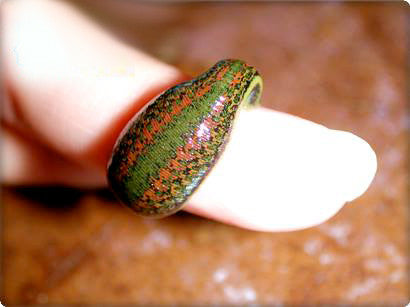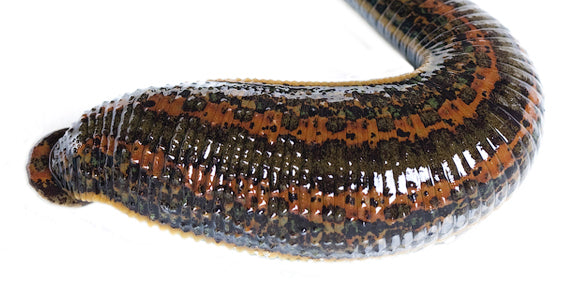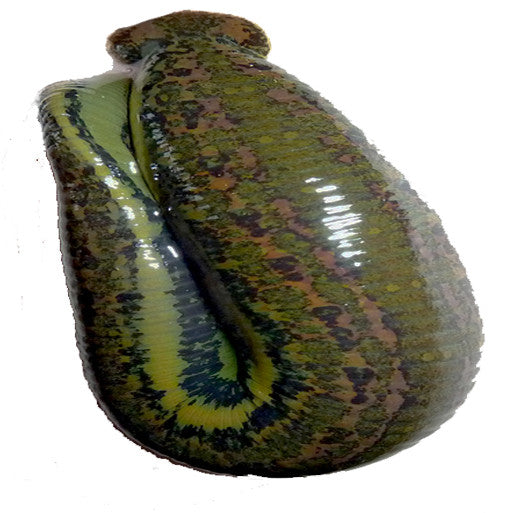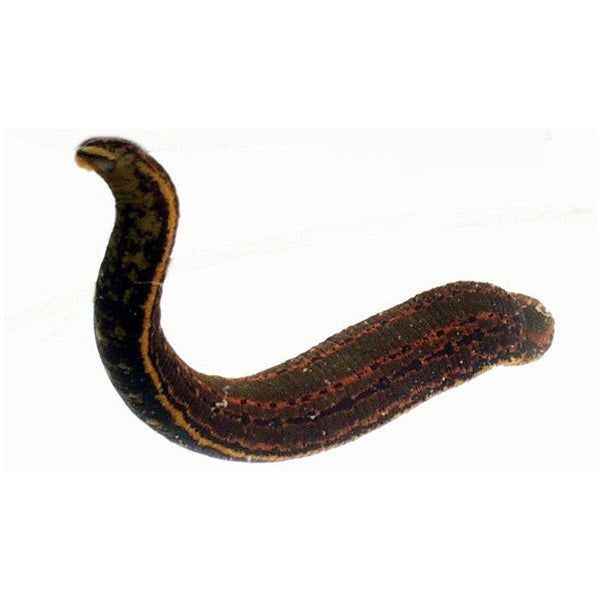
Hirudo Medicinalis Bloodsucking Leech - also known as the "Hungarian Leech" is the first ever variety of leech to be used in medicine & hirudotherapy in the history of the world. The Hungarian leech (hirudo) is a close sister of the Hirudo Medicinalis and nearly identical in appearance, genetics, composition and function to its counterpart. In ancient times, leeches began to be used in Eastern Europe & Russia for medicinal purposes by healers and practitioners. Leaches were most extensively used in Romania, Hungary and the huge land mass of former USSR - now encompassing all of the Russia's territories. The leech inhabiting those areas featured a distinctly-beautiful pattern on its back and a greenish-brown tint of coloration. As the ancient practice of Hirudotherapy grew and became more popular and widespread, West European countries took notice and adopted the use of the Hungarian leech in their own medicinal practices. Countries such as France, Netherlands & Germany began importing huge quantities of Hirudo and applied them on the bodies of the patients for different medical conditions. In more modern times, doctors and Scientists of Western Europe eventually decided to conduct more extensive studies on the leech as an animal and healer. To conduct those studies, they needed a leech more locally-prevalent to the region of Netherlands (Holland) and the Western parts of Europe. The leech variety that was studied was eventually called Hirudo Medicinalis and the leech itself posesses the same pattern and coloration as the original leech, but its side stripes have a more flat-pinstriped pattern than the wider and more elaborate coloration pattern of the. Hospitals and Medical professionals analyzed extensively the hirudin quantity and found there to be over 360 bio-available components in their leech saliva. Leach functions and aftereffects were also tested and probed, as a result of which, the western European leech variety was therefore deemed as the "official leech", as it had been scientifically studied and documented and it provided a good reference point for doctors and hospitals to scientifically base their own data on. Taking into consideration the convenience of being local to the studying-groups, the Hirudo medicinalis species has since been capitalized upon, turned into an expensive industrial medical brand and began to be grown and bred in clinical leech farms and capitalized upon. Today, Hirudo Hungrian leech continues to be the single most widely-used leech of Europe by the people, folk healers and medicine-men. Its use has extended worldwide, as populations migrate and take their healing practices with them. This product is one of our most-sold leeches among experienced Russian Hirudotherapists and Leech SPA practitioners in USA and Worldwide!
Гирудотерапия - лечение медицинскими пиявками
 UPON ARRIVAL: Immediately transfer your leeches out of the container with special gel and into a jar of cold water!
UPON ARRIVAL: Immediately transfer your leeches out of the container with special gel and into a jar of cold water!
HOW TO GET THEM OUT: Pour out the gel with the leeches from the container. If the leeches are still inside, you may add a bit of cold water and swoosh everything around vigorously. If they are still stuck to the walls, you may try to use your fingers. Regular tweezers may harm the body of the leech, so they are not recommended for use - its best to purchase the recommended leech forceps used for easy removal and handling of the leech. In the absence of forceps, be sure to handle your leeches quickly, so they don’t start sucking blood from your fingers.
BEST CONTAINER TO USE: Keep your leeches in a large glass (or plastic) jar with a tight lid. The container needs to be filled about 1/3 full of ice-cold water. The lid needs to be closed and you may puncture needle-size holes in it. Alternatively, instead of a lid, you may cover your jar with cloth tied with an elastic band.
CARE: Change the leech-water at least once a week. Dump out old water by shaking it around vigorously first, with the lid on, until the leeches’ skins come off (they shed their skins about once a week). Skins appear as slimy whitish-clear particles, floating in the water. Carefully pour-out the old water with skins, taking care not to pour out any of the leeches, then, refill the jar again, close and shake. Repeat this process as many times as needed, until all the skins are completely gone and the water is perfectly clear. Fill the jar again with 1/3 cold water (its ok to use tap) and close the lid tightly.
Keep your jar with leeches in a cold, partly dark place, away from direct sunlight. During winter, they can be kept outdoors, partly-covering the jars with a towel, to protect from full sun-exposure. We do not advise you to feed your leeches during winter. Leech species can keep for 1 year without feeding. Keep your fed leeches apart from the hungry ones, as they will prey on each other. Be sure to purchase separate jars, to separate your fed and hungry leeches properly.



